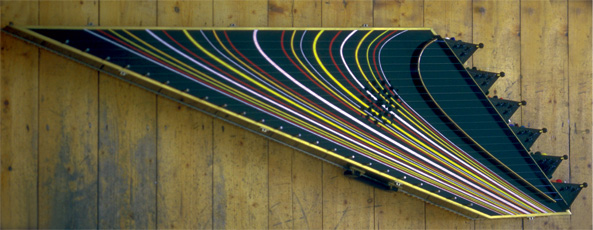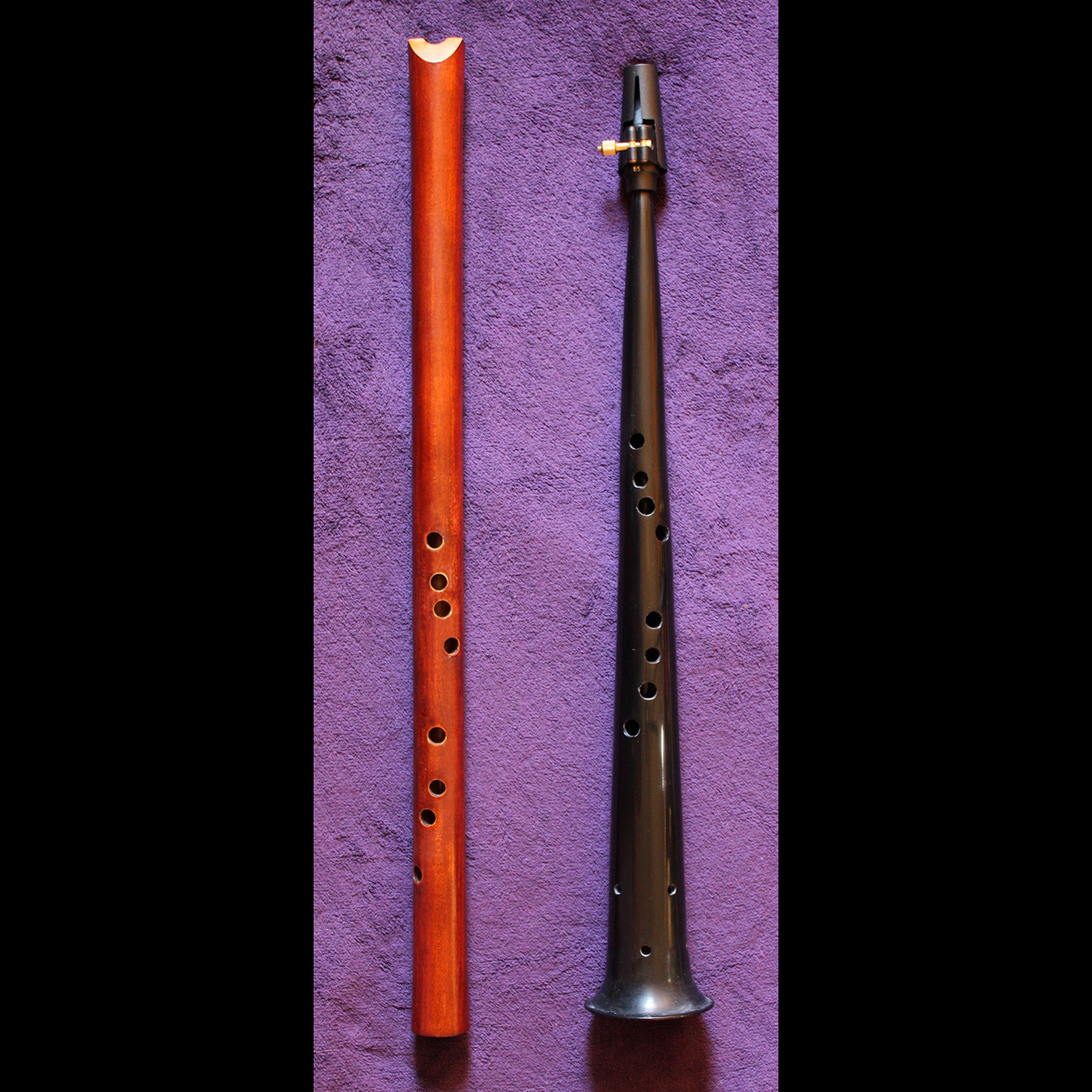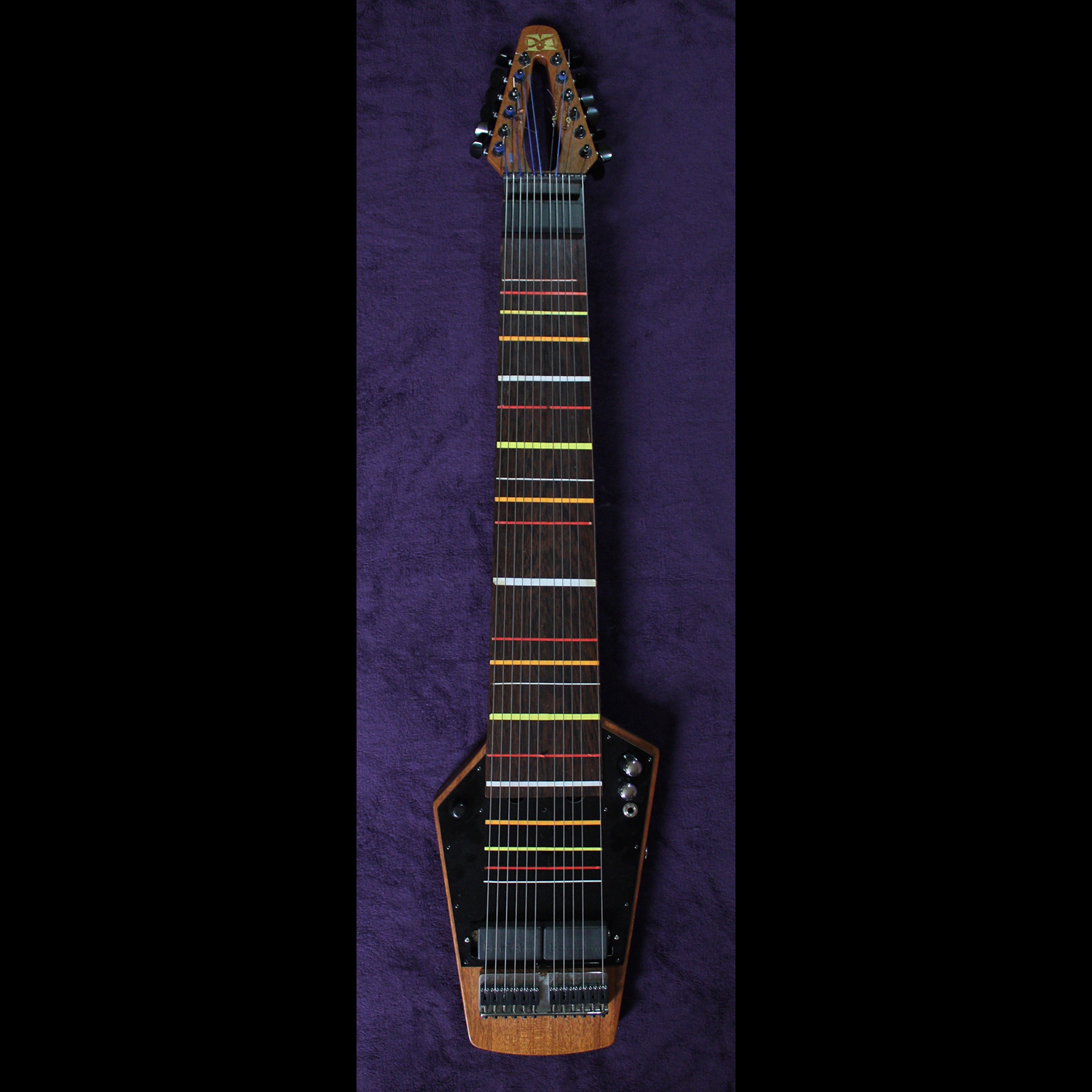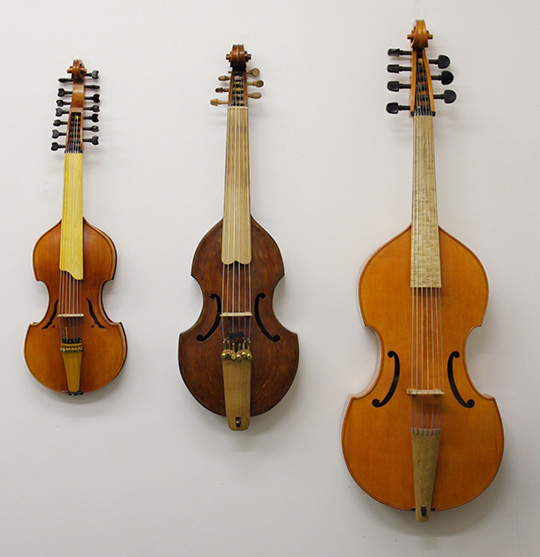
Figure 33
Thus how much nobler is the study of music as a rational science than as a laborious skill of manufacturing! It is nobler to the degree that the mind is nobler than the body.
Boethius’ remark typifies the dualism which pervades neo-Pythagorean thought, where the physical act of music making is subordinate to the intellectual design. While much of my musical research so far has been a mental rather than a physical exercise, this has been by necessity rather than choice, for my ultimate goal has always been to actually play this music, to engage both the mind and the body as equal partners in the process of acoustic creation.
The immediate problem is how to play this music, since most chordal instruments are designed specifically to interpret equal tempered music. One possible approach is an electronic one, triggering detuned notes on a synthesiser keyboard. However, translating the architecture of the Lambdoma onto that of a piano keyboard is not ideal - assigning ratios to black and white keys is a rather random affair, and the end result is not particularly user friendly. With this in mind, I‘m using a monome interface device (figure 33) which has the same 16 x 16 archtecture as the Lambdoma matrix.

Figure 34
Given the choice, though, I would prefer to explore this musical world by acoustic means. This may well seem a somewhat anachronistic attitude in view of the contemporary tidal flow of music technology, but as a musician I personally find the manipulating and controlling of disembodied voices by pressing buttons unsatisfying. I favour a more physical interaction in the creative process using instruments which may be more limited in their scope, but are more gesturally sensitive.
To this end, over the last few years, I have had to develop the "laborious skill of manufacturing", to use Boethius’ phrase in its other sense.
The string instrument shown in figure 34 is called Harmonic Canon, and has been designed and built specifically to interpret Harmonicism. It is a twenty-three string instrument spanning a range of two octaves, which can be plucked, bowed, struck and generally man-handled with a variety of techniques.
Twenty-three may seem an odd number of strings to choose, but this decision stems from the Lambdoma. Figure 35 corresponds to a section of the frequency Lambdoma shown in figure 23, where the central vertical unity is 256 Hertz (cycles per second). The reason for choosing this pitch as unity rather than middle C (261.6 Hz) or A440, is that this number is more mathematically friendly both when proportional ratios are calculated and also when frequency generators are used to analyse cymatic phenomenon (see below).
Figure 35
Now, the 5x5 matrix in figure 35 represents the first emergence of the major colour consonances from the interaction of terms 4 to 8 of the overtone and undertone series. The diamond spans two octaves from 128 to 512 Hz and has 21 different tones (the five central unities are identical). We can add two further consonances to those shown in the diagram, both of which fall within the two octave span, but appear higher in the Lambdoma hierarchy. These are 3/5 and 5/3, corresponding to the frequencies 153.6 Hz and 426.66 Hz. Thus we arrive at twenty-three strings.
Figure 36 shows what happens if these frequencies are translated to proportional string length (the solid lines). This would clearly lead to a rather gawkily shaped instrument, and so the lengths can be standardised into a more regular shape (the dotted lines). Indeed, compromise is one of the first lessons to be learnt in musical instrument making.
Figure 36 (Click to Enlarge and Play)
An instrument of this shape would be perfectly playable if it were not for the need to bow it; there is not enough room at the lefthand ends of the strings to get a reasonable purchase on the string with a bow. Thus in the final design (figure 33) I have sheared the strings to the left, so lengthening the stagger between the left ends of the strings. This in turn necessitates a curved bridge, which although laborious to make, does create the nodal line pattern on the soundboard, a progressive curving of a straight line.
In terms of tone quality, this instrument’s closest relation is probably a bowed zither. The thin open strings produce a ringing tone, rich in partials, and this is a determining factor in how it can be played. For while the strings can be split with moveable bridges following the method I explained above, this tends to produce a deader tone quality than unstopped strings. The virtue of the open string approach is the singing interplay of the harmonics of the different fundamentals, which because of their proportional interrelationship also set up sympathetic vibrations with other strings.
This interplay, in turn, alerts us to a further direction in which we can develop the Lambdoma musically. For if we consider the open string fundamentals as x and y coordinates in the two dimensional matrix of figure 34, so the overtones and implied undertones derived from the strings can be viewed as z coordinates extruding the matrix into three dimensions. This is clarified in figure 36, which shows the resultant frequencies when the third harmonic is sounded on each string.
Figure 37
It is interesting to observe the interconnections between the two- and three-dimensional matrices. Let’s consider the frequency 384 in figure 34, which is 3/2 above unity 256. The third harmonic of this is shown to be 1152 in figure 36. Now, if we refer back to figure 23, we can see that this is identical to the frequency of 9/2 in the two-dimensional Lambdoma. Similiarly, the frequency 960 (the third harmonic of 320 (5/4) coincides with the two-dimensional ratio 15/4.
Clearly, these correspondances only hint at the musical architecture of a three-dimensional Lambdoma. Furthermore, this move to three dimensions is only the first step towarrds a multi-dimmensional musical structuree, for the processs by which figure 35 evolvess into figure 37 can be developed ad infinitiumm.
However, I think it is unwise to pioneer these outer reaches of tonal space without first examining Harmonicism on a more comprehensible level. If through playing we are naturally led in these directions, all well and good, but there is no point pursuing complexity for its own intellectual sake.
The harmonic canon allows us to explore the formal architecture of Harmonicism - how diverse tones meld with unity. In tandem with this, we shall need to study the dynamic nature of the tones themselves for, as we shall see, not only frequency but also tonal quality and amplitude have a bearing on cymatic patterning.

Figure 38
Wind instruments have an ideal capacity to produce these subtle gradations of tonal hue, and the two instruments shown above are prototypes of instruments I intend to incorporate into a future musical ensemble, along with the harmonic canon.
The harmonic flute on the left is based on a japanese shakuhachi, an end-blown flute, while the telphone on the right is a hybrid of a hungarian taragato, which is a close relative to the soprano saxophone. Their simple design and lack of elaborate keywork liberates rather than handicaps the player. True, fast and intricate note patterns are more difficult to execute, but this encourages the player to concentrate on the considerable potential for tonal variation, with the possiblities of bending and gliding between notes in a vocal manner.

Figure 39
The harmonic guitar shown above is a twelve-stringed instrument tuned within the range of an octave. It is what is called a third bridge guitar; there are pickups at both ends of the strings and is played with a bottleneck so that both parts of the string on either side of the bottleneck sound. As such it is ideal to explore the split string concords that I mentioned above (figure 31 and 32). Plucked harmonics also ring very clearly on this instrument.

Figure 40
Of all musical instruments in use today, it is the violin family which offers the greatest receptivity to Harmonicism, for the simple, untempered nature of tone production has left these instruments unscathed by the ravages of Equal Temperament.
In fact, many of the theorists who have trodden this path before me turned to these instruments for inspiration: Harry Partch, the composer and instrument-maker whose work has been a major catalyst for this project, adapted a viola as one of his first instruments and the composer Paul Hindemith, whose opera ‘Die Harmonie der Welt’ celebrates the musical speculations of Johannes Kepler, was at one time a professional violist.
I intend to continue this tradition by investigating Harmonicism using the three instruments shown above: the viola d’amore, which has an other-worldly sheen to its sound due to its sympathetic strings, the tenor and bass viols. They have a large scope for gestural sensitivity and are ideal for exploring the split-string concords which we examined previously.

Figure 41 (Click to Enlarge and Play - requires flash to play)
Figure 41 shows how triple stopping on the viola can replicate the string concords in figure 32. The treble line correlates with the right-hand concords from a third of the string length to the midpoint, while the bass line plots the inverse progression on the left-hand side of the earlier figure. The standard notation is only used as a general guide of the tonal movement, not as an indicator of precise pitch, which is specified by the ratios and colour coding. So the 5/2 5/3 concord towards the middle of the treble line corresponds with the concord produced when a string is split at 2/5 (or 3/5) of its length. The ratio above the stave signifies the higher tone’s relationship with the fundamental c and the ratio below refers to the relationship of the lower tone with c. The ratio between the two is shown by their colour-coding. Since the violin family is unhampered by fretting, this chordal procedure can be expanded infinitely by transposing the fundamental.
We should also be aware of an acoustic phenomenon which occurs when chords are sounded on instruments with a pure tone quality. If you have ever heard two flutes or violins playing together unaccompanied in a resonant space, you may have noticed a faint bass line which leaps around in a seemingly random fashion while underpinning the interplay of the two instrumental lines. These notes are called difference tones. If the frequencies of the two instrumental tones are 300 and 200Hz, that is in a ratio of 3/2, then the perceived bass tone will have a frequency equal to their difference, 100 Hz (1/2, an octave beneath the lower tone, 2/2.)
We can see how this process evolves by referring to the Lambdoma in figure 42. If the higher tone walks down the supernumerary series from 3/2 in ever smaller and more dissonant steps towards the lower tone, (unity 1/1), these steps are shadowed by a corresponding progression of difference tones downwards into the depths of the undertone series. When the tones are sufficiently close together, we no longer perceive the undertones as tone but as periodic beats, and we enter the domain of proportional rhythm, of rhythm harmony.